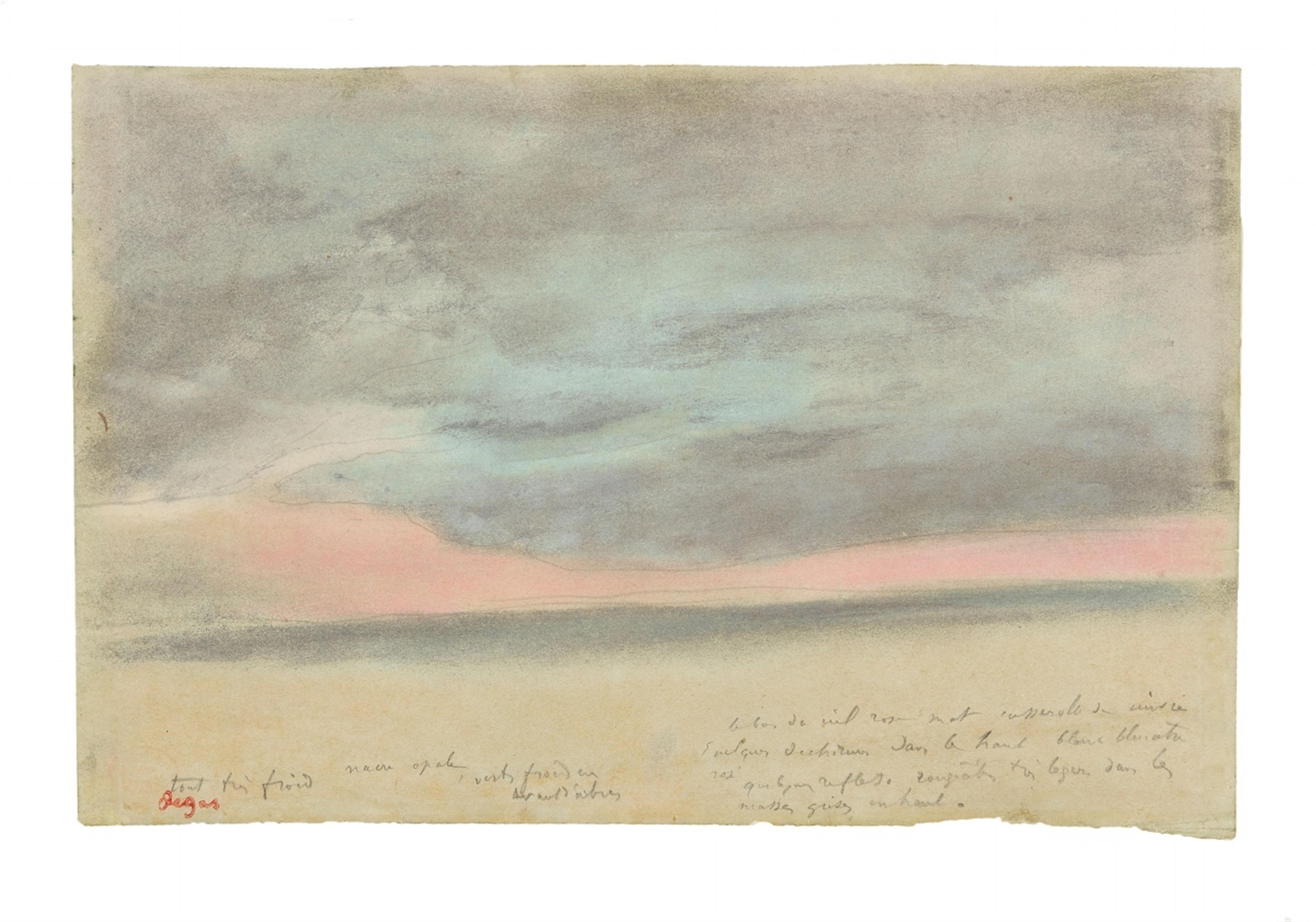Edgar Degas
Étude de ciel (Rivage et ciel)
1869
Pastel on paper 23.7 x 35.5 cm Framed under glass. Red signature stamp "Degas" (Lugt 658) as well as barely visible oval red stamp "ATELIER ED. DEGAS" (Lugt 657) lower left. - Mounted on paper.
Edgar Degas spent the summer of 1869 at the seaside resorts of Villers-sur-Mer and Etretat on the French coast of the Channel. Here, under the impression of the sea and the seemingly endless sky, he created a series of landscape pastels - something new for the urban painter. This atmospheric series would actually remain a singular episode in his oeuvre, because Degas began to suffer from problems with his vision while working outdoors.
It was in these subtle landscape studies that Degas first discovered the medium of pastel chalk, which would become so important for all of his subsequent work, and he quickly achieved the greatest expressive power in the use of this technique. “In the pastel, he had found an adequate idiom for developing the subdued tonality and arabesque lines of a landscape silhouette in rapidly placed strokes of colour. […] When Cézanne recognised watercolours as a medium suited to him, Degas - beginning with the suite of landscapes from 1869 - made the pastel his central means of representation, alongside pencils, chalks and charcoal. He quickly discovered that, in this technique, the use of line could be perfectly naturally united with painterly density and solid materiality confronted with delicate transparencies, which permitted the ground of the paper to contribute to the work's effect. He drew with chalks of varying hardness, while he was able to achieve painterly effects with his fingertips, soft brushes and tortillons” (Götz Adriani, Edgar Degas. Pastelle, Ölskizzen, Zeichnungen, exh. cat. Kunsthalle Tübingen/Nationalgalerie Berlin 1984, Cologne 1986, p. 50). With the most delicate nuances, the artist has masterfully captured the fleeting natural phenomena of this seascape defined by wind and clouds, in which colours and values are subject to constant change.
In doing so, he followed the English masters of romanticism, who - in their intensive studies of nature during the 1820s and 1830s - occupied themselves with phenomena related to the appearances of the sky and clouds. John Constable, in particular, became famous for his oil studies of cloud formations, to which he dedicated himself with great intensity and a scientific aspiration; around 1810 his contemporary William Turner began to observe the sky in atmospheric watercolours, which he heightened to the point of dynamic abstractions.
Catalogue Raisonné
Lemoisne 224; Michel Schulman, Edgar Degas: Digital Critical Catalogue MS-1350
Certificate
We would like to thank Michel Schulman, Paris, for kind information
Provenance
Atelier Degas, 4. Vente, no. 49a; Collection Albert Pra, Paris; Vente Pra, Paris, Hôtel Charpentier, 17 June 1938, lot 13; Galerie Schmit, Paris; Private collection, Switzerland
Exhibitions
Paris 1975 (Galerie Schmit), Degas, no. 12 ("Etude de ciel"); Paris 2005 (Galerie Schmit), Maîtres Francais des XIXème et XXème siècles, no. 19 ("Rivage et ciel"), each with gallery label verso

